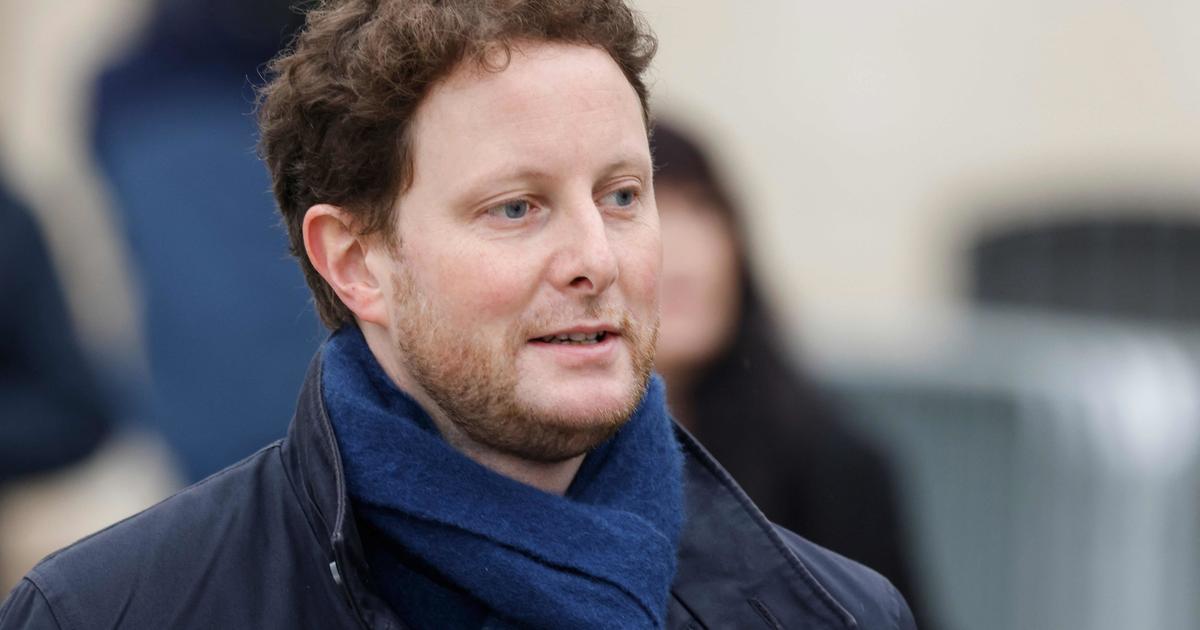The masks have become the great social containment wall against the covid and although there is still no date to put them in the drawer, the Ministry of Health will study, with its experts and the communities, a possible flexibility of its use outdoors. The Government does not specify deadlines, but as vaccination progresses - 36% of the population has at least one dose - and the transmission of the virus falls, that mouth-to-air scenario approaches. For now, the European Center for Disease Control (ECDC) has already recommended reducing their use among those vaccinated and countries such as Israel, with higher vaccination rates, or the United States, have stopped using them on the street. But experts in Spain are divided and, while some advocate making its use more flexible, others call for caution, at leastto further increase the rate of immunized and lower the incidence, which stands at 126 cases per 100,000 inhabitants in 14 days, at medium risk, according to the Health traffic light. Some communities, such as the Basque Country or Madrid, are still at high risk.
More information
Simón sees "very possible" that the use of outdoor masks will relax "in not many days"
The United States will allow the vaccinated population to do without the mask even indoors
Top scientists question the mandatory mask outdoors and with distance
The recommendation of the use of the mask went from nothing to everything in the first months of the pandemic: from those days of March 2020, when the lack of material prevailed and the authorities refused to extend its use among the population, until de-escalation, at which point it began to become compulsory everywhere. Since the end of the first state of alarm and the entry into the new normal, last June, most of the autonomous communities implemented the mandatory use of the mask, indoors and outdoors and regardless of whether it was kept 1.5 meters away. between individuals. Scientific evidence then showed its benefits indoors, especially due to transmission by droplets and aerosols, and although it was more questioned outdoors, practical criteria prevailed:to avoid confusion among the population, it is better that it is always used. "The truth falls by its own weight and outdoors, the risk is low, but then it was considered that it was a way to protect the sender and the receiver," says Toni Trilla, head of Preventive Medicine at the Hospital Clínic de Barcelona. The rest of the non-pharmacological measures have been changing according to the epidemiological evolution, but the mask is here to stay.
As vaccination progresses and virus transmission falls, however, more and more voices are coming out in favor of making this measure more flexible. Above all, due to the paradox that its use has spread to all outdoor spaces, but there are exceptions in some interiors, where the risk is greater. "This measure is absurd, since it forces us to wear masks in low or no risk environments, such as the countryside or the streets of our towns and cities, while maintaining exceptions to their use in proven risk environments, such as workplace interiors, where people who do not live together share the same space for several hours in a row, ”protested the Madrid Public Health Association in a statement. In this sense, the bars have also been in the spotlight, especially with the capacity of the interiors,since they are places of greater risk of transmission and where people remove their masks more easily with the justification of eating or drinking.
“The logical thing is that by August we should not have the obligation to wear a mask when there is distance. We have a decreasing trend in cumulative incidence and an increasing vaccination curve in quality and quantity: the elderly are covered. Now it is a bit early because we have part of the risk groups that have not yet been vaccinated, but it is a matter of common sense ”, resolves Rafael Ortí Lucas, president of the Spanish Society of Preventive Medicine, Public Health and Hygiene. More than 94% of people over 60 years of age, the most vulnerable group, have received at least one dose of the vaccine and the cumulative incidence in Spain has dropped to the levels of last August.
The ECDC has already recommended making the use of the mask more flexible among vaccinated people and even when non-immunized individuals from the same household or social bubble are with vaccinated people and there are no other elements of risk of serious disease.
His American counterpart, the Center for Disease Control and Prevention (CDC), has gone further and, after announcing last March that the immunized could meet each other without a mask, on May 13 he gave Green light for all vaccinated people to be able to do without the mask, both outdoors and indoors.
Several people walk around the Puerta del Sol area in Madrid on May 7. Jesús Hellín / Europa Press
Spain looks at that scenario, but still hesitant. “This issue will be taken to the Alert Report and later to the Interterritorial Council, as explained by the minister. There are no deadlines. We must still be cautious and maintain prevention and safety measures ”, explained a Health spokesperson regarding the flexibility of the use of masks. The director of the Center for Health Alerts and Emergencies, Fernando Simón, went on to say last week that it is "very possible" that the use of outdoor masks will be relaxed "in not many days", although this Monday he also recalled the legal pitfall for make the use of face masks more flexible: there is a state regulation - law 2/2021 - that requires the use of masks on public roads,in outdoor spaces and in closed spaces for public use or that are open to the public, as well as in transport. And making changes to a law "is not so easy," he said. Precisely, that regulation, which contemplated de-escalation measures and was a bit outdated when it was published in March, provoked the rejection of several regional governments due to the literalness of the law (it imposed the use of the mask outdoors even when alone). Health had to intervene and propose to the communities a revision of the norm to ensure that the mask is not mandatory to be on the beach but it is during walks, for example.which contemplated de-escalation measures and was a bit outdated when it was published in March, provoked the rejection of several regional governments due to the literal nature of the law (it imposed the use of face masks outdoors even when alone). Health had to intervene and propose to the communities a revision of the norm to ensure that the mask is not mandatory to be on the beach but it is during walks, for example.which contemplated de-escalation measures and was a bit outdated when it was published in March, provoked the rejection of several regional governments due to the literal nature of the law (it imposed the use of face masks outdoors even when alone). Health had to intervene and propose to the communities a revision of the norm to ensure that the mask is not mandatory to be on the beach but it is during walks, for example.
However, while the health authorities decide the future of face masks in Spain, the Government's protocol for the next school year contemplates the use of the mandatory mask from the age of six.
The measure, however, has already been questioned by Catalonia, for example, which in its guide for the next year leaves open the door to the fact that, within the bubble groups, children from first to sixth grade of primary school, do not wear a mask if the epidemiological situation is favorable.
“I see the Catalan position as more reasonable.
There may be an excess of prudence on the part of the Government.
I think the concept of a stable bubble is more manageable, ”says Trilla.
More information
A lounge, a bar and a class: this is how the coronavirus spreads in the air
Premature measure
Vaccination works in favor of the end of the mask: it protects the person who has received the puncture and also reduces the risk of transmission to other people, thereby helping to reduce the circulation of the virus. But the rate of vaccination, some experts say, is insufficient to relax the use of the mask. “It is not a reasonable debate at the moment. It is more than premature and can be irresponsible. We should not even contemplate it when the incidence is still very high in a large part of Spain and the population vaccinated with the full schedule is still very small ”, points out Daniel López-Acuña, former Director of Emergencies at the World Health Organization. And remember that, although the risk of transmission is lower, a vaccinated person can become infected and infect. Alberto Infante, emeritus professor at the National School of Health, agrees:“By a principle of precaution and prudence, I would be in favor of the mask being the last non-pharmacological measure to de-escalate. It is true that as vaccination progresses, the justification for not wearing a mask in open, non-crowded places declines a lot. But we should be in low transmissions and substantial vaccination levels ”, he points out.
Experts do not agree on the right moment to start relaxing the rule. Although Simón suggested, at least, to be with an incidence of medium risk (less than 150 cases per 100,000), López-Acuña goes further: “From my point of view we can only begin to consider stopping using the mask when the incidence accumulated is less than 25 per 100,000 and 70% of the population has been vaccinated with two doses ”, he points out. The epidemiologist points out, "at the earliest, in September." "And I think that hospitals, public transport and nursing homes will have to continue with it," he adds. Trilla, for its part, estimates that "in June, or July, it is possible that its use outdoors will be relaxed", but agrees with López-Acuña, it will come to stay in some areas: "It would be good to continue with it in hospitals,emergency patients, in public transport… But not because of the coronavirus alone, but also because of other respiratory viruses ”.
The most reluctant fear that the population will perceive the wrong message if the use of the mask is made more flexible: "If we do it now, we send the message that this is over and it is not," says Infante.







